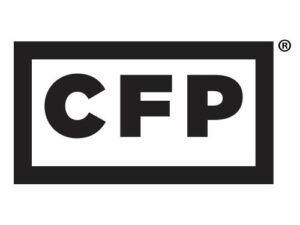By Bryan Trugman, CFPⓇ
At some stage in life, most people will inevitably need to think about getting life insurance, particularly if they have children or other loved ones who rely on them. With a multitude of options ranging from term to whole to universal policies, choosing the right one can seem overwhelming—to say the least. The right choice hinges on your unique needs and specific circumstances, and though each type of life insurance offers its own benefits, understanding the differences is vital to making the right decision for you and your loved ones.
Let’s explore the most prevalent types of life insurance to guide you in making an informed choice.
Term Life Insurance
Term life insurance is typically less expensive than other types of insurance. It provides coverage for a specified period of time, usually 10, 20, or 30 years. If you die during that time, your beneficiaries will receive a death benefit; if you don’t die during the term, the policy expires and you get nothing.
Because term life insurance is one of the least expensive and simplest types available, it’s an excellent choice for those who only want coverage for a specified period of time, like until your children reach a certain age or your mortgage is paid off.
Benefits of Term Insurance
Here are a few advantages of term life insurance:
- It’s affordable: Term life insurance is very affordable, especially when compared to whole life insurance, making it an excellent option for families or individuals on a budget. What’s more, the premium is usually guaranteed to stay the same for the length of the term.
- It’s flexible: Term life insurance policies can be customized to meet your needs. You can choose the length of the term and the amount of coverage and even add riders to your policy to further customize it.
- It’s simple: Term life insurance is a very straightforward coverage—with no complicated investment components or cash value accounts to worry about.
- It’s convertible: If you no longer need term life insurance, some policies can be converted, either fully or partially to whole life insurance or another type of permanent life insurance. This gives you the flexibility to change your coverage as your needs change.
- It’s tax-free: Death benefits from term life insurance are typically tax-free. This means your beneficiaries will receive the full amount of the death benefit without having to pay any taxes on it.
Drawbacks of Term Insurance
It’s important to keep in mind that sometimes the cheapest solution is not always the best solution. Here are some disadvantages to a term policy:
- Use it or lose it: The use-it-or-lose-it nature of a term policy is a big drawback. No one can predict their death, and with a term insurance policy, there’s a strong chance you won’t pass within the specified time frame. In this case, you lose the death benefit and all the premiums you’ve paid over the years. How much could that money be worth if it was invested in the market or in an insurance policy with a cash value?
- Premium increases: Though the premiums are usually guaranteed during the first term, they can increase exponentially when it comes time to renew. This is especially true if you are past the age of 60 or have experienced any changes in health that will impact your evidence of insurability.
- Financial ratings: Because term policies can last up to 30 years, it is crucial that you thoroughly vet the companies you insure with. This includes researching the financial ratings and overall health of the company. The last thing you want is to make it 20 years into a 30-year policy and have the company go bankrupt.
Permanent Life Insurance
Permanent life insurance is more expensive than term life insurance because it covers you for your entire life. As long as you pay the premiums, your beneficiaries will receive a death benefit when you die. While the possibility of earlier than expected death exists, most individuals will live into their 80s, 90s, and beyond. Acquiring a permanent life insurance policy ensures a death benefit payout when it’s statistically more probable. Initiating the policy at a young age is crucial for manageable premiums and insurability.
Permanent life insurance has an investment component known as cash value. This cash value grows over time and can be used to help pay premiums or it can be borrowed against in case of an emergency. Permanent life insurance policies, including whole life, universal life, variable universal life, and indexed universal life all provide lifetime coverage. However, they differ in several key aspects including cash value accumulation, flexibility, investment options, and risk exposure.
Whole Life Insurance
Whole life insurance has a fixed or guaranteed premium, death benefit, and cash value accumulation. Coverage will not decrease or be revoked, and premiums will not increase or decrease over the life of the policy.
Cash values increase based on contract guarantees and reinvestment of dividends if it’s a dividend paying policy (not all are) but it will never decrease below the guaranteed value. The cash value will grow on a tax-deferred basis, but once money is withdrawn from the policy, any earnings will be taxable as ordinary income.
Generally, whole life coverage is a good fit for those seeking guarantees in their life insurance coverage, without the complexities of investment options.
Universal Life Insurance
Universal life insurance is another type of permanent, but it has a flexible premium and death benefit. The premium is usually lower than whole life, but the policy usually comes with fewer guarantees.
With this type of insurance, policyholders can adjust the premiums and death benefits over time. Cash values accumulate based on an interest rate set by the insurance company. It is also riskier than whole life because cash value declines could cause your premium payment to go up next month in order to keep the policy in force.
Generally, universal life policies are recommended for those who are comfortable assuming some level of interest rate risk in exchange for flexibility in premium payments and the ability to adjust coverage over time.
Variable Universal Life
Variable Universal Life Insurance offers flexibility in premium payments and allows clients to allocate premiums to different investment options based on their risk preferences and objectives. It’s ideal for clients comfortable with investment risk and aiming for higher returns within their policy. Given that cash value performance can impact the longevity of coverage, those considering Variable Universal Life Insurance should understand investment principles and be ready to actively manage their policy’s performance to maximize returns while mitigating risk.
Indexed Universal Life
Indexed Universal Life Insurance offers potential market-linked returns with downside protection, comparable to Variable Universal Life Insurance, but with less exposure to market volatility. Clients can participate in market gains while being shielded from downturns, like Variable Universal Life Insurance, but with more stability. However, understanding that the selected index’s performance directly affects cash value accumulation and benefits is crucial for effective policy management, as with Variable Universal Life Insurance.
Benefits of Permanent Life Insurance
Permanent life insurance, whether whole or universal, is an excellent alternative for those seeking long-term financial stability. Here are a few of its benefits:
- Death benefit protection: One of the primary reasons why people purchase life insurance is to provide financial protection for their loved ones in the event of their death. Permanent life insurance policies offer this same death benefit protection but on a much longer-term basis than traditional term life insurance policies.
- Flexible premium payments (universal): Another key advantage of permanent life insurance is that it offers policyholders the flexibility to make premium payments that fit their budget and needs. This can be especially beneficial for those who have unexpected changes in their income or cash flow.
- Tax-deferred growth: Another significant benefit of permanent life insurance is that the policy’s cash value grows on a tax-deferred basis. This means you will not have to pay taxes on any of the growth in your policy’s cash value until you withdraw the money.
- Access to cash value: One of the best features of permanent life insurance is that it allows policyholders to access their policy’s cash value for various purposes. Some people use this money to help cover unexpected expenses, while others use it to supplement their retirement income.
- Greater investment control: Both whole and universal policies offer a greater degree of investment control since policyholders are allowed to choose how their premium payments are invested.
Drawbacks of Permanent Life Insurance
Some of the downsides of permanent life insurance include:
- It’s expensive: Permanent life insurance policies are much more expensive than term policies. Not only are you paying for the life insurance coverage, but a portion of your premium is also being invested as part of the cash value. It is essentially “forced savings.” If you do not need additional savings, or simply can’t afford it, permanent life insurance may not be the right choice for you.
- It’s complicated: There’s a lot that goes into a permanent policy, especially when it comes to the cash value component. Policyholders will need to choose their investments and pay close attention to the policy’s terms and conditions in order to ensure coverage remains intact throughout time. If you have an indexed universal policy, your interest rate will often be capped at a certain level, which can make it less desirable than just investing in the open market.
- Greater risk exposure (universal): Universal policies, especially variable policies, can expose your cash value to a greater degree of risk than other permanent life insurance policies. This is because the growth rate is not guaranteed, meaning negative market returns could cause your cash value to decline.
Get the Right Insurance for Your Needs
You’ve probably heard the old adage “Better safe than sorry.” This is particularly true when it comes to creating stability for yourself and your family with insurance. Whether you’re considering term, whole, or permanent coverage, it’s crucial to understand your options to best put in place a dependable shield for unexpected life events. Frequently, a combination of life insurance policies is suitable, with each serving a distinct role in protecting your family. For instance, a client might require a total coverage of $2 million, comprising a $1.5 million term policy and a $500,000 Whole Life policy.
According to Jessica Metz, Regional Director at Crump Life Insurance Services, “There are numerous Insurance Carriers and products in the market. It is important for clients to work with financial advisors who can provide options that best fit the client’s Insurance needs. I work hand in hand with Bryan to offer Brokerage Insurance Expertise in finding the right solutions for his clients.”
Safeguarding yourself with the appropriate insurance is among the wisest decisions you can make, so take action today to get all your questions answered by our team at Attitude Financial Advisors. Reach out to me via email at btrugman@attitudefinancial.com or give me a call at (516) 762-7603 to set up a free consultation and take the first step toward a clear, confident future.
About Bryan
Bryan Trugman is managing partner, co-founder, and a CERTIFIED FINANCIAL PLANNER™ practitioner at Attitude Financial Advisors. With more than 16 years of experience, Bryan specializes in addressing the financial needs of new parents as they seek to realign their finances, assisting divorced individuals as they navigate an unforeseen fork in the road, and strategizing with those seeking to accrue a dependable retirement nest egg. Bryan is known for being a good listener and building strong relationships with his clients so he can help them develop a customized financial plan based on what’s important to them. He is passionate about helping his clients experience financial confidence so they can worry less and play more. Bryan has a bachelor’s degree in industrial and systems engineering with a minor in mathematics from State University of New York at Binghamton. He has served on the board of the Financial Planning Association and continues to be actively involved in the national organization. He is also a member of the Plainview-Old Bethpage Chamber of Commerce and has served as its vice president and as a board member. When he’s not working, you can find Bryan on the ballroom dance floor or engaged in a fast-paced game of doubles on the tennis court. To learn more about Bryan, connect with him on LinkedIn. Or, watch his latest webinar on: How Much Is Enough? A Surprisingly Simple Way to Calculate Your Retirement Savings Needs.



